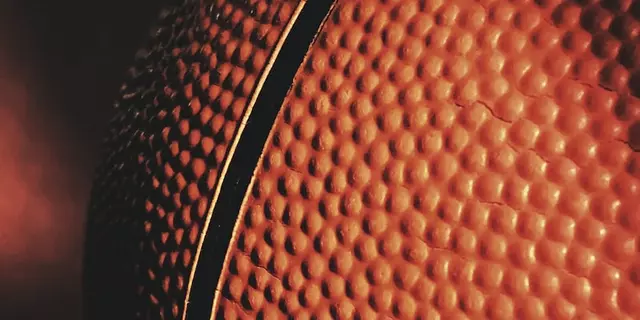
The Conception of Ice Hockey and its Superstar: The Puck
Picture this: A bright, sunny day, and instead of lounging around on one of Sydney's beautiful beaches, I decide to hole myself up in my study, much to the chagrin of my Border Collie, Murphy. Well, what can I say, even a dad of two lovely kids – Harvey, a budding artist, and Seraphina, my little science enthusiast – can have some eccentricities. And today, my eccentricity swirls around the captivating question of what the very first puck used in ice hockey was made of.
The conception of ice hockey happened in the mid-18th century on the frozen water bodies of Canada. This exciting sport quickly found a home in North America before spreading its charm worldwide, even reaching the ice-free corners of Australia. The star we're focusing on today, and without which the sport would be practically impossible, ironically doesn't receive the spotlight it deserves. So, let's delve into the hoopla surrounding the popular, often overlooked puck!
Pucks Back in Time: Early Versions of the Ice Hockey Puck
Imagine, if you will, a rough and tumble ice hockey game using a frozen piece of cow dung. Yes, you read that right. How crazy is that? In the early days of ice hockey, around the 1880s, that wasn't far from reality! This was the intriguing beginning of the puck's journey.
In an era when industrialization was in its infancy, and synthetic materials were a dream in science fiction, people used what they had. Frozen cow patties had the right weight and size, and although it sounds unsavoury from our modern perspective, it was effective. We should be grateful for innovations in technology since; otherwise, our beloved game of hockey would have a much different, smellier aura!
The Evolution of the Ice Hockey Puck: From Wooden Blocks to Rubber Discs
As the game of ice hockey gained in popularity so did the need for a standard puck. The cow dung pucks were replaced by wooden blocks. Carving a piece of wood into a crudely shaped disc was an innovative leap in the era of frozen dung pucks. The common consensus was that the wooden block was an improvement, and for many years this was the standard.
However, the wooden blocks brought their own set of challenges, such as splintering and inconsistent weight distribution. It wasn't long before the tireless pursuit of progress sought a better alternative. Enter, the solid rubber puck – the game changer of the hockey world. The solid rubber disc boasted durability, ideal weight, and excellent glide, ushering in a new era for the sport.
Designing the Ideal Puck: The Story Behind the Bevels and Grooves
It's funny to think that one day, Seraphina, my young Einstein, might get inspired by something as basic as the design of a hockey puck for her science project. The puck isn't just a featureless slab of rubber; it has some interesting nuances to its design. The bevels - those rounded edges you see along the circumference of the puck - serve a purpose. They're not just there for looks!
Similarly, the grooves on the sides aren't there without reason. They provide the perfect grip for puck pickups and puck flips. This ingenious design, practically an engineering marvel in the sports world, provides optimum control and prevents the puck from bouncing unpredictably – an essential feature when speeding down the rink!
The Modern-Day Puck: The Unsung Hero of the Ice Hockey World
As the game of ice hockey unfolded into a sport of global stature, the once-forgotten puck evolved as well. In fact, the same rubber pucks we see today started their journey in the late 19th century. The modern-day puck hides its fascinating history of grit and innovation within its 3-inch diameter and 1-inch thickness.
Believe it or not, these specifications are the result of years of relentless experimentation and tweaking to provide the absolute best performance. Considering the importance of the puck to the sport, its simplistic design might give the wrong impression, but the truth is, the modern-day puck is a proven champion - the unsung hero of the ice hockey world.
Unusual Pucks in History: The Quirky Siblings in the Puck Family
Bemusingly, throughout the history of ice hockey, there have been some unusual and downright quirky pucks. These unusual pucks, while not as practical or capable as their rubber counterparts, were undeniably characters in the sport's history. Who would have thought a cow-decked biscuit could evolve into a rubber marvel!
I remember a hilarious anecdote from a hockey commentator about a team in the Alps that used cheese rounds as pucks when they couldn't find any rubber ones. I can't even begin to imagine the chaos and fun that would have ensued!
Final Thoughts: Reflecting on The Puck's Humble Origins
The sun's about to set on our day of exploring the journey of the humble ice hockey puck. From its origin as a frozen piece of cow dung, through its evolution as a wooden block and into its modern form as a rubber disc, it's been an adventure. A true testament to human ingenuity and resilience.
Next time you are watching a hockey match, or playing one yourself, give a thought to the little puck sliding swiftly on the ice rink. Remember, it has its own story, and it is playing as crucial a role as the players themselves.
Who knew Discs Could Be So Intriguing?
We started with a simple question about what the first puck used in an ice hockey game was made of, and ended up discovering an enchanting piece of sports history. As the day's end sneaks upon me, I can almost hear Harvey and Seraphina playing in the distance, and even Murphy barking in anticipation of his evening walk.
From the cow dung fields to cheese rounds, to the crowds chanting in an ice hockey stadium, the puck's journey mirrors our own — full of changes, adaptation, and growth. A beautiful testament to how something as simple as a small, flat circular disc can weave intriguing tales. Keep exploring, folks – there's a lot more to know!


